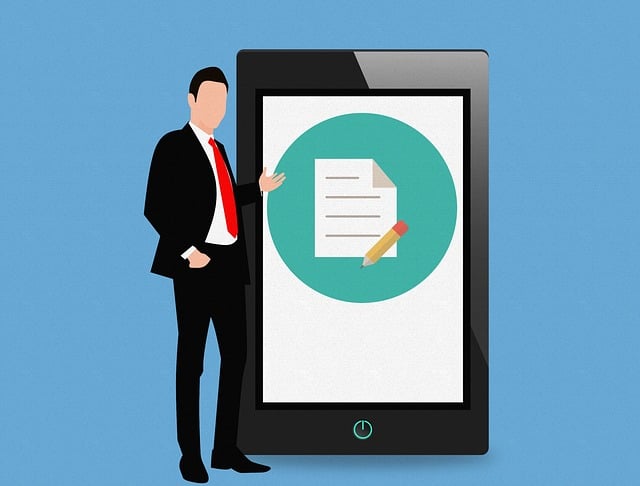In the digital age, sending a formal letter may seem like a relic from the past. However, there are still numerous occasions where writing a letter in block format can be an essential skill to possess. Whether you’re composing a cover letter, business proposal, or simply need to correspond with an esteemed organization, learning the art of block format writing is crucial. In this article, we will guide you through the ins and outs of formal writing, providing you with practical tips and examples to master the art of composing clear and professional-looking letters. So, grab a pen and paper, and get ready to impress with your impeccably formatted correspondence!
Contents
- The Importance of Formal Writing
- Understanding Block Format for Letters
- Exploring the Block Format for Letters
- Structuring Your Letter in Block Format
- Tips for Writing a Clear and Concise Introduction
- Crafting Detailed and Effective Body Paragraphs
- Concluding Your Letter with a Professional Tone
- Wrapping Up Your Letter on a Professional Note
- Polishing Your Block Format Letter with Correct Formatting
- Frequently Asked Questions
- In Conclusion
The Importance of Formal Writing
Formal writing is a crucial skill that has a significant impact on various aspects of our lives. From academic settings to professional environments, the ability to express oneself in a clear and structured manner is highly valued. Whether it is writing an essay, drafting a business report, or sending an important email, using formal language helps convey professionalism, credibility, and authority.
One of the main advantages of formal writing is its ability to ensure effective communication. By adhering to specific rules and conventions, formal writing provides a standardized framework that enables individuals to convey their ideas accurately and precisely. Moreover, it helps eliminate any ambiguity or misinterpretation that may arise from using informal language. The use of proper grammar, punctuation, and syntax plays a crucial role in enhancing readability and comprehension, allowing the intended message to be conveyed effortlessly.
Key benefits of formal writing:
- Establishes a professional image and credibility
- Facilitates effective communication
- Enhances readability and comprehension
- Conveys logical and well-structured thoughts
- Ensures accuracy and precision
In summary, cannot be overstated. It serves as a foundation for effective communication, leaving a lasting impression on the reader. By adhering to the rules and conventions of formal writing, individuals can make their ideas more persuasive, increase their chances of success in various domains, and ultimately, leave a lasting impact.
Understanding Block Format for Letters
Exploring the Block Format for Letters
In the realm of formal communication, the block format for letters reigns supreme. It is a widely accepted format used for business, professional, and academic correspondence. Understanding how to effectively utilize this format can greatly enhance your written communication skills and make a lasting impression on the recipient.
The block format, also known as the full block style, is characterized by its left-justified paragraphs with clear separations between each section. Unlike other formats, where certain parts of the letter are indented, the block format aligns all text along the left margin, creating a clean and professional appearance. To make your block format letter stand out, consider the following key elements:
- Sender’s Information: Start by placing your contact details at the top-left corner of the page. Include your full name, address, phone number, and email address.
- Date: Directly below your information, add the date when the letter is being sent or written.
- Recipient’s Information: After leaving a line below the date, type the recipient’s full name, job title, company name, and company address. It is crucial to ensure accuracy when addressing your recipient.
- Greeting: Following the recipient’s information, it’s customary to include a polite salutation, such as “Dear Mr./Ms./Dr. [Last Name].” Remember to use the appropriate title and last name of the recipient.
Structuring Your Letter in Block Format
In block format, the structure of your letter is crucial in conveying a professional and organized impression to the recipient. Here’s a breakdown of how you can structure your letter effectively:
1. Contact Information: Begin by including your contact information at the top left corner of the page. Include your full name, address, phone number, and email address. This allows for easy identification and ensures the recipient can reach out to you if needed.
2. Date and Recipient Information: Just below your contact information, insert the date of writing on the left-hand side. Then, include the recipient’s full name, job title, company name, and address on the next line. Make sure to leave a blank line between your contact information and the date, as well as between the recipient’s information and the salutation.
3. Salutation: Address the recipient appropriately, depending on your level of familiarity with them. For formal letters, use “Dear Mr./Ms. [Last Name]:” followed by a colon. If you are acquainted with the recipient, you can use a more casual salutation like “Dear [First Name]:”. Use bold or italics to make the salutation stand out.
4. Body: The body of your letter should be well-structured and concise. Start it by introducing yourself and the purpose of your letter. Use clear and specific language to communicate your message effectively. Maintain proper paragraphs, leaving a blank line between each paragraph. This ensures readability and prevents your letter from appearing cluttered. Consider using bullet points or numbered lists to enhance the organization and clarity of your points.
In adopting the block format and following these guidelines, you can create a professional letter that leaves a lasting impression on the recipient. Remember, a well-structured letter demonstrates your attention to detail and professionalism, amplifying the impact of your message.
Tips for Writing a Clear and Concise Introduction
Creating a clear and concise introduction is essential for capturing the attention of your readers from the very beginning. Here are some useful tips to help you craft an introduction that engages your audience and sets the tone for your writing:
1. Clearly state the purpose: Start your introduction by clearly defining the purpose of your writing. Whether it’s an essay, article, or blog post, let your readers know what they can expect to gain from reading it. Use a concise and compelling sentence to grab their attention and convey the main idea of your piece.
2. Keep it brief and to the point: A concise introduction is key to maintaining your readers’ interest. Avoid unnecessary details and lengthy explanations. Instead, focus on providing a brief overview of what your writing will cover. Highlight the most important points and give your readers a sense of what lies ahead in the subsequent sections. Remember that a clear introduction should act as a teaser, sparking curiosity and encouraging readers to delve further into your text.
3. Avoid jargon and complex language: To ensure your introduction is accessible to all readers, avoid using complex terminology or jargon that may confuse or alienate them. Opt for simple and clear language that is easy to understand. By doing so, you will create a more inclusive and engaging introduction that appeals to a broader audience.
4. Be mindful of your tone: Think about the tone you want to convey in your writing and reflect it in your introduction. Whether it’s a professional tone for an academic piece or a conversational tone for a blog post, choose your words carefully to establish the appropriate atmosphere. This will set the stage for the rest of your writing and help your readers connect with your content on a deeper level.
Ultimately, a clear and concise introduction is your opportunity to hook your readers and make them eager to explore your ideas further. By following these tips, you’ll be well on your way to creating captivating introductions that leave a lasting impression.
Crafting Detailed and Effective Body Paragraphs
When it comes to writing a well-structured and compelling essay, is essential. The body paragraphs serve as the meat of your essay, where you provide evidence, analysis, and examples to support your main ideas or arguments. To help you master the art of creating engaging body paragraphs, here are some key tips to keep in mind:
- Start with a strong topic sentence: Each body paragraph should begin with a clear and concise topic sentence that introduces the main point or argument you will be discussing in that paragraph. This sentence sets the tone and provides a roadmap for the rest of the paragraph.
- Provide evidence and support: After presenting your topic sentence, it’s important to provide evidence or examples to support your claim. This evidence can come from a variety of sources, including research, personal experiences, or expert opinions. Be sure to cite your sources accurately to maintain credibility.
- Utilize effective transitions: Transitions are crucial for creating cohesion and flow between your body paragraphs. They help guide the reader from one idea to the next, making your essay more coherent and easier to follow. Some examples of transitions include linking words, phrases, or sentences that establish connections between ideas or show cause and effect relationships.
Additionally, it’s crucial to remember that body paragraphs should not be isolated entities but rather interconnected parts of a larger whole. Each paragraph should contribute to the overall argument or main idea of your essay, supporting your thesis statement or hypothesis. To achieve this, make sure that your body paragraphs are organized logically and that there is a clear progression of ideas from one paragraph to the next.
Lastly, remember to vary the length and structure of your body paragraphs to keep your essay engaging. While some paragraphs may require more in-depth analysis or description, others may be shorter and more concise. By utilizing these tips and techniques, you can craft detailed and effective body paragraphs that enhance the overall quality and impact of your essay.
Concluding Your Letter with a Professional Tone
Wrapping Up Your Letter on a Professional Note
When it comes to concluding your letter, it’s important to maintain a polished and professional tone that leaves a lasting impression on your reader. Here are a few tips to help you wrap up your correspondence in the most effective way:
- Express gratitude: Take a moment to show appreciation for the recipient’s time, consideration, or any assistance they may have provided. This simple act of gratitude goes a long way and leaves a positive impression.
- Reiterate main points: Summarize the key points or requests you made earlier in the letter. This helps reinforce your message and ensures that the reader understands your intentions.
- Provide contact information: Include your phone number, email address, or any other relevant contact details. By doing so, you make it easier for the recipient to reach out to you if they have any further questions or need clarification.
Remember, ending your letter with professionalism not only leaves a good impression but also sets the stage for future correspondence. By employing these strategies, you can conclude your letter with style and leave the reader with a favorable perception of you and your communication skills.
Polishing Your Block Format Letter with Correct Formatting
When it comes to writing a block format letter, correct formatting is key to ensuring a professional and polished look. To help you make your letter stand out, here are a few formatting tips to keep in mind:
1. Align your text: In a block format letter, all text should be aligned to the left, with no indentation. This creates a clean and organized appearance, making it easy for the reader to follow along. Use the
tag to denote paragraphs and the
tag to create line breaks when necessary.
2. Use clear and concise language: A block format letter should be straightforward and to the point. Avoid using overly complex language or excessive jargon. Instead, focus on conveying your message clearly and effectively. Incorporate bullet points using the
- and
- tags to present information in a concise and visually appealing manner.
Remember, when polishing your block format letter, the key is consistency. Ensure that your font, font size, and line spacing remain consistent throughout the document. By paying attention to these details and following the correct formatting guidelines, you can create a letter that leaves a lasting impression.
Frequently Asked Questions
Q: What is block format in formal writing?
A: Block format is a specific style used for writing formal letters. It involves aligning all text and paragraphs to the left margin with no indentation, making the letter appear neat and well-organized.Q: When is it appropriate to use block format in a letter?
A: Block format is commonly used for business letters, cover letters, and formal correspondences. It’s vital to adopt this format when applying for jobs, writing official letters to organizations, or presenting a professional image in your writing.Q: How do I format the sender’s address in block format?
A: In block format, begin with the sender’s address at the top left corner of the letter. Include your name, street address, city, state, and zip code. Leave a space, then write the date on the same line or the line below, aligning it with the sender’s address.Q: What is the correct way to format the recipient’s address in block format?
A: After leaving a space below the sender’s address and date, start the recipient’s address, aligning it with the left margin. Include the recipient’s full name, title (if applicable), company or organization name, street address, city, state, and zip code.Q: How should the salutation be written in block format?
A: Skip a space after the recipient’s address, then write a formal salutation, such as ”Dear Mr./Ms./Dr./Prof. Last Name,” followed by a colon. If the recipient’s gender is unknown, use their full name instead.Q: How do I structure the body paragraphs in block format?
A: After the salutation, leave another space and begin writing the body of your letter. Use single spacing within paragraphs and double spacing between paragraphs. Align all text to the left margin, and ensure that paragraphs are separated clearly.Q: What should be included in the closing of a block format letter?
A: End the letter with a formal closing, such as “Sincerely,” “Yours sincerely,” or “Yours faithfully.” Leave four spaces, then type your full name, preferably followed by your job title or any relevant credentials.Q: Are there any other important elements to remember when using block format?
A: Yes, there are a few additional aspects to consider. Use a professional font and size, such as Times New Roman or Arial, 12-point. Keep your letter concise and to the point, and proofread it carefully for any spelling or grammar errors before sending it out.Q: Can I use block format for email correspondence as well?
A: While block format is primarily used for written letters, it may also be applied to email communications. Simply omit the physical addresses and replace them with email addresses for both the sender and recipient. Ensure your email signature includes your full name, contact information, and any relevant details.Q: Is block format the only type of formal letter format I can use?
A: No, block format is just one of the many formats available for formal letters. Other formats like modified block, semi-block, and full block might be appropriate for different situations. It’s essential to choose the format that best fits your needs and the specific guidelines provided by the recipient.In Conclusion
In conclusion, mastering the block format is essential for writing professional letters. By following the guidelines, you can ensure clarity and professionalism in your correspondence.







